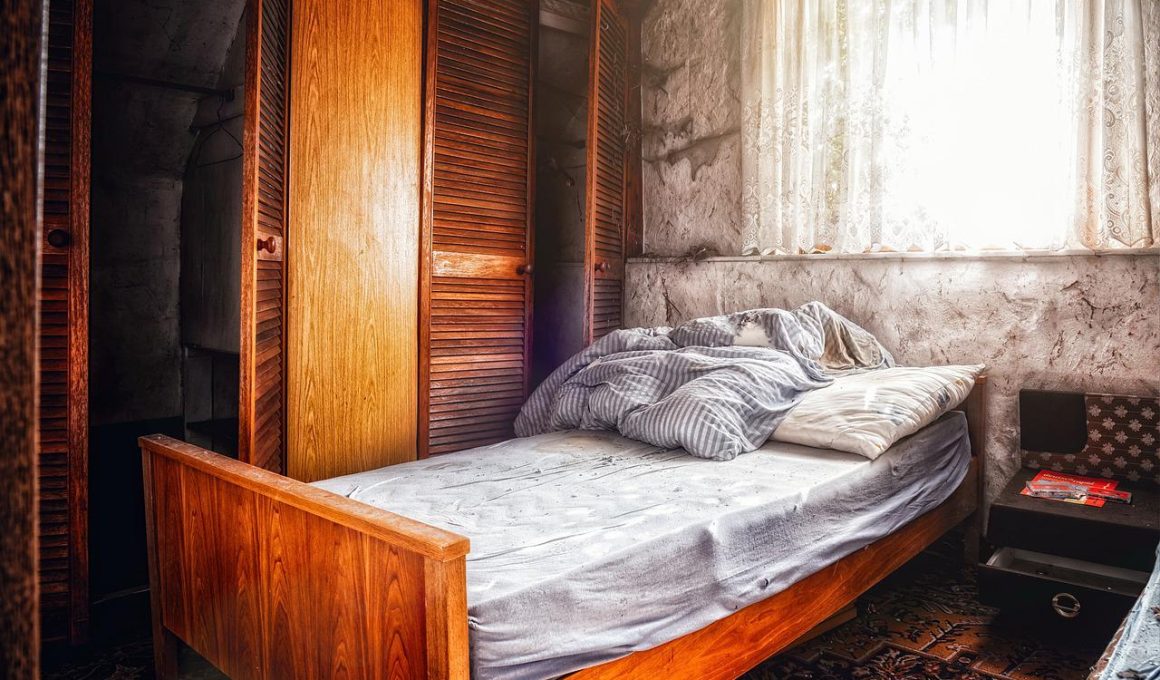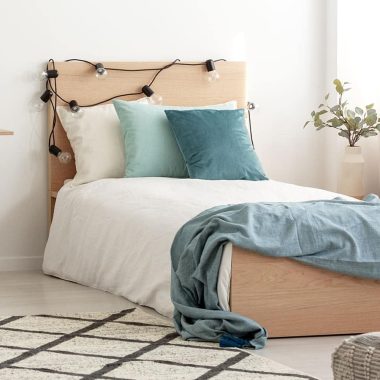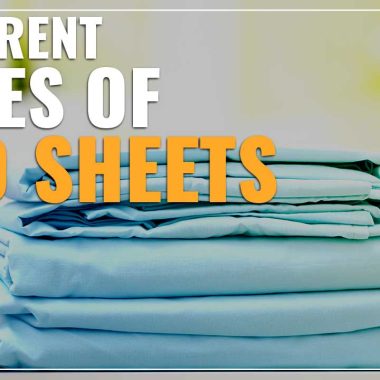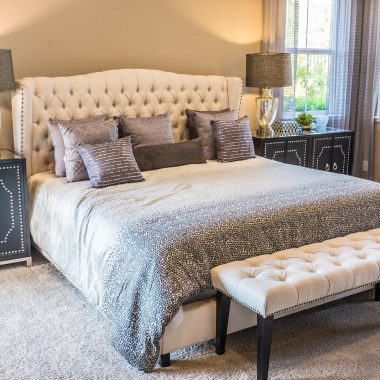What type of mattress should you get? Different types of mattresses are out there, and they all seem to offer something unique. Which one is the best?
The average person spends around 8 hours of sleep each night, which means they spend half their lives asleep.
If you want to sleep better, you need to invest in a good-quality mattress.
We all know how important sleep is to our health and well-being.
The ideal mattress should provide support, comfort, and pressure relief. I don’t think anyone wants to wake up with body aches and pains.
Some of these mattresses provide pressure relief, and some are meant to support your body.
The best mattress depends on your sleeping position, preference, and budget.
Mattresses come in various shapes, sizes, materials, and prices. The choice can be overwhelming.
In addition to sleep quality, there are other benefits to having a good night’s rest.
Here’s everything you need to know to decide between these options.
1. Foam/Memory Foam
Memory foam is widely used in pillows and mattresses nowadays. But it was invented by NASA in the 1970s.
Its primary function was to provide seat cushioning and crash protection for aviation passengers and pilots, and it is still used in that capacity today.
For several reasons, you may find the material to be the ideal bed cushioning.
It adjusts to the contours of your body while evenly distributing your weight across the surface.
If you’re the type that experiences discomfort or achy joints in the mornings from spending too much time in one position, then this mattress is for you.
Why? It offers pain relief. In addition, memory foam is a heat-activated substance that softens and conforms in direct response to body temperature.
Memory foam also provides warmth for sleepers who get cold when sleeping.
The same technology that allows it to conform to your body when it touches it also makes the bed appear warmer.
If you sleep hot, you might want to choose foam with modern technology improvements designed to keep you cool, such as gel infusion.
These advances promote air cumulation through the support layers, keeping you cool while you sleep.
Furthermore, memory foam is naturally resistant to microorganisms and allergies.
This bed will not expose you to mold, bed bugs, or dust mites.
With memory foam, the days of hot, sweaty, non-breathable mattresses are over!
2. Innerspring
Do you remember being a small child bouncing on a squeaky bed with some kind of metal inside? Yes, the standard innerspring mattress created with the steel coil support system.
While you might recall lying on a mattress of this type, it’s unlikely that you’ve ever seen what they look like inside.
These products employ springs linked into a single unit, and the number of coils used boosts sleep quality.
Although many people have moved on to take advantage of newer mattress technology, the standard innerspring mattress remains the most popular.
These mattresses are consumer-friendly in terms of affordability. They also have a variety of firmness options and are easy to transport.
It’s important to understand that there are a few challenges, though. While these mattresses are affordable, they’re of low quality in their capacity to relieve pressure and pain points.
Additionally, as the springs start to squeak from wear, you might hear noises when you roll over in bed at night. Furthermore, these mattresses are often prone to wearing out quickly.
3. Hybrid
The sleep industry has successfully merged the greatest features of both worlds to create hybrids.
Most options combine sophisticated memory foam technology with an advanced innerspring core.
It’s one of the different mattresses that provide excellent support, comfort, and durability.
The stand-alone pocketed coil technology helps the sleeper have a more restful night’s sleep by reducing motion transfer.
Also, the combination of the two technologies allows the mattress to retain the look and appearance of a traditional sleep surface. This is a benefit if you enjoy a little bounce in your bed.
In addition, this option has a traditional shape instead of straight lines and low profiles in strictly memory foam.
They are hypoallergenic since they are topped with foam. Mold, bed bugs, allergies, and dust mites cannot infest your bed.
4. Natural Fiber
While researching different types of mattresses, you may have come across natural fiber options. These products are exactly what they sound like.
Your mattress uses natural fibers instead of many of the manufactured goods on the market, such as foams. These materials are available in a range of combinations.
You may expect to pay a higher price because these products require more exact precision in the manufacturing process.
Furthermore, most of these products are made without the use of chemicals. So, you can rest assured that this purchase will minimize your carbon footprint.
You can even buy confidently when you see the official Greenguard certification label.
What does the label imply? The product’s environmental and health impact has been thoroughly evaluated.
5. Latex
Latex alternatives were invented in the 1930s and became popular with consumers in the 1960s.
They were more expensive than their competitors because of high material and production costs and were far out of reach for the common individual.
Over the last 20 years, technological advancements have reduced the cost of producing latex beds, making them more affordable.
People who want to relieve lower back discomfort frequently use these beds.
Furthermore, latex is made from plant—or petroleum-based components. This makes it popular among the eco-conscious because it offers environmentally friendly options.
The resilient material provides support similar to memory foam, offering a soft surface that relieves pressure from pressure points like the hips and shoulders. It also helps maintain proper alignment while sleeping.
The material is also wise if you share a bed with someone who moves a lot at night.
You and your partner will both sleep more soundly since latex suppresses motion, making it less likely that you will feel it if they toss and turn.
6. SomniGel
Because there are different types of mattresses, no mattress provides the features ideal for everyone.
While some people may be drawn to the sinking-in sensation of memory foam, others may want the exact opposite. And a gel mattress offers just what this kind of customer desires.
Gel foam is an excellent option for a mattress that quickly returns to its natural shape after you release pressure.
In fact, an impressive test was conducted in which an elephant stepped on a SomniGel, and it swiftly bounced back to normal after the huge foot was removed.
Furthermore, these mattresses don’t push back when you sleep on them the way you might be used to.
This is because they have an outstanding 78 percent open air and contact surfaces as low as 22 percent.
They also have the impressive capacity to dissipate heat, making it possible for you to sleep more comfortably.
The hollow columns in the mattress allow for increased airflow and keep the bed fresh.
7. Waterbed
The waterbed was not only common but also attractive in the 1970s and 1980s.
Even though it went out of style in the 1990s, you can still buy one if you like its structure and design. It’s also among the different types of mattresses.
Waterbeds come in either a hard-sided or soft-sided design and offer support via a water chamber system.
The soft-sided waterbeds store their water chamber inside a rectangular stiff foam frame zipped inside a fabric casing.
At the same time, hard-sided waterbeds house their water chamber inside a rectangular wood frame.
The water chamber in both types is then covered with upholstery materials and padding, such as foam and fiber. It sits on top of a platform.
If you favor ocean motion, you can install a free-flow chamber system in which nothing blocks the water flow.
However, if you prefer less rock in your boat, you can choose a waveless model that reduces the water’s capacity to flow through the chambers.
The major disadvantage is that your mattress can eventually start to leak. To ensure the bed is in good condition, regularly check underneath and behind it for puddles.
8. Air Mattresses
This is one of the popular types of mattresses. Outdoor enthusiasts mostly use it to enhance their camping experience.
These mattresses allow you to fill the separate air chambers to the required firmness, allowing for a flexible sleeping experience.
To produce a cozy sleeping surface, padding and upholstery materials, such as latex or memory foam, are placed on top of the air chamber.
Furthermore, most air beds have a remote control that lets you change firmness.
Because of the various air chambers in their design, you can adjust each side of the bed separately.
This creates a customized sleeping experience for couples who prefer different sleeping settings.
9. Polyfoam
Foam mattresses support all pressure points, so many people feel more comfortable sleeping on them.
The main issue is that foam absorbs body heat, which can be uncomfortable for people who want to “sleep cool.”
The first foam product made from petroleum is called polyurethane or simply polyfoam. It can be created in a variety of densities.
The mattress will last longer and provide a firmer night’s sleep and higher density.
Sometimes, the comfort layer comprises a different type of foam or a pillow top, with the inner support layer being made of polyurethane foam.
These mattresses are good for pressure relief and are the least expensive foam mattress type.
Also, they encourage proper posture and spine alignment. Sleepers can enjoy a degree of relief from allergies due to the inorganic fibers in them.
A polyfoam mattress should always have the CertiPUR US certification since petroleum contains potentially toxic compounds.
This accreditation provides comfort in knowing that the mattress is free of formaldehyde, heavy metals, and ozone depleters.
10. Pillowtop
Pillowtops are among the different types of mattresses. To create pillowtop mattresses, a layer of padding is stitched on top of a regular mattress. The padding can be made of cotton, wool, or foam.
The mattress’s pillowtop layer increases comfort and durability. It’s also washable and has cooling properties.
However, a pillowtop mattress cannot be turned over and is more expensive than a regular mattress.
Any mattress type can have a pillowtop attached to it; nevertheless, innerspring mattresses most frequently benefit from the extra layer’s plusher feel.
The extra layer looks slimmer and more compact in the Euro-top version of this design.
11. Adjustable Beds
With many different types of mattresses, you might hesitate a little before deciding to purchase. If you’re in this situation, you might want to consider adjustable beds.
You can do exactly as the name says with this option. You are responsible for making the necessary modifications to provide yourself with the flexibility you may need to accommodate your needs.
In addition, adjustable beds are very versatile. They can be used with adjustable bases and box springs to give them more personalization.
When you choose these products, you can use them with any headboard or footboard.
Adjustable beds prove beneficial in some cases, such as :
- If you or your partner experience back discomfort, loud snoring, or sinus congestion.
- You want to raise your legs while watching your favorite tv show.
- You want to work on your laptop comfortably.
However, these beds can be quite expensive and very loud. They can also prove difficult to clean, and maintenance costs are high.
12. Smart Mattresses
Last on this list of different types of mattresses is the smart mattress.
This mattress combines various elements, such as adjustable firmness features from air mattresses and flexibility from adjustable bed mattresses, to produce a mattress with virtually unlimited adjustment.
For instance, you can pick a mattress with separate remote controls that let side-by-side sleepers select their individual preferences for the mattress’s hardness, position, and temperature.
In some instances, these mattresses will change their firmness automatically if they detect movement during the night.
Smart mattresses are hybrids that combine features of the various types of beds. They often have air chambers to offer the adjustability factor.
These mattresses also have some foam in the support layers and memory foam or gel on the surface comfort layer. A pillow top is also a common addition to smart mattresses.
However, you cannot simply purchase any smart mattress and mount it to an existing frame.
Full-adjustable smart mattresses are usually proprietary and require matching bed frames from the manufacturer.
Conclusion
That’s all about the different types of mattresses. Trying out mattresses in-store can help you to determine some basic things.
Also, try to find mattresses with flexible return policies or a risk-free trial period to let your body make the ultimate decision on your ideal mattress.









